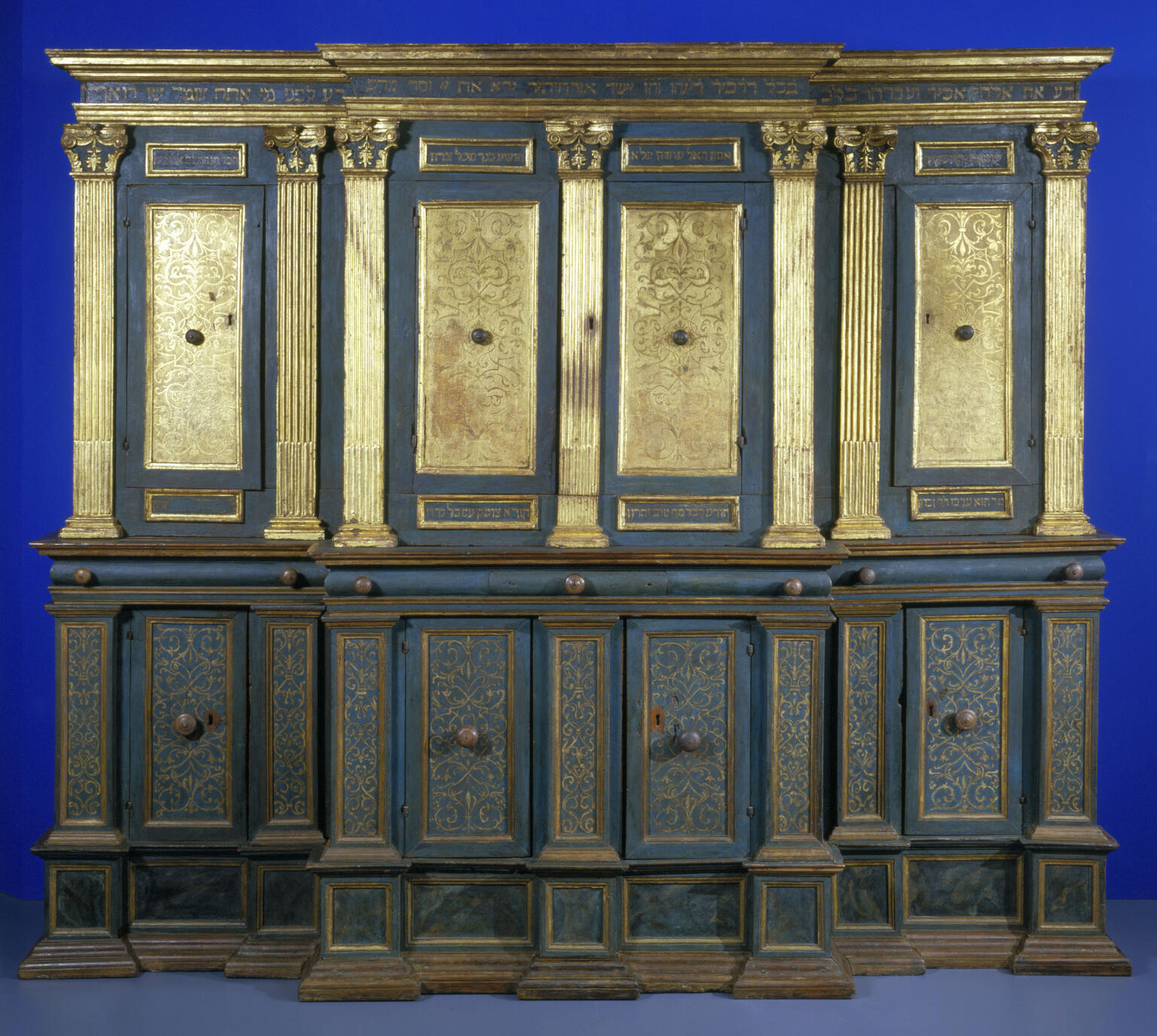Urbino Synagogue, Italy
Artist Unknown
ca. 1500
This Torah ark, installed in a synagogue in the Italian town of Urbino, is a fine example of Renaissance Judaica. Carved from walnut in the early sixteenth century, the ark belonged to the Sephardic community in Urbino, which had grown significantly as a result of the migration of Spanish Jews after the 1492 expulsion. The ark features pilasters in both of its tiers as well as decorative doors. The ark was refurbished in 1624; changes included additional gilding, rhymed verses, and a coat of teal paint.
Credits
Torah Ark. The H. Ephraim and Mordecai Benguiat Family Collection / The Jewish Museum, New York.
Published in: The Posen Library of Jewish Culture and Civilization, vol. 5.
You may also like
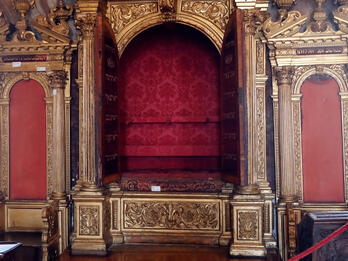
Scuola Grande Tedesca (Venice)
The Scuola Grande Tedesca is the oldest of five synagogues in the Venetian ghetto and was built in 1528 by the local Ashkenazic community. Although only its five windows are visible from the street…
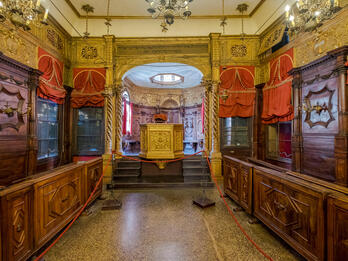
Scuola Canton Synagogue, Venice
The second-oldest building in the Venetian ghetto is the Scuola Canton Synagogue. Built several years after the Scuola Grande Tedesca, the Canton Synagogue also served the Ashkenazic community. The…
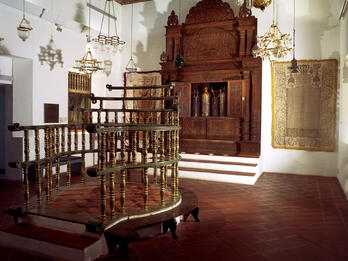
Kadavumbagam Synagogue (Cochin, India)
The Kadavumbagam Synagogue received its name (which means “by the side of the landing place”) from its peripheral location at the border of the Cochin Jewish neighborhood, where it served the Malabari…
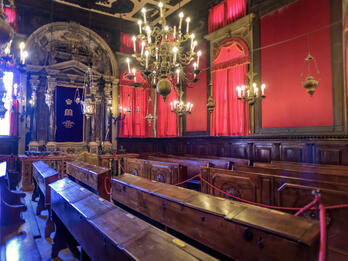
Scuola Levantina, Venice
The Scuola Levantina (Levantine Synagogue), a Sephardic synagogue built in 1541, was restored in the late seventeenth century. The bimah is thought to have been carved by Andrea Brustolon, famed for…
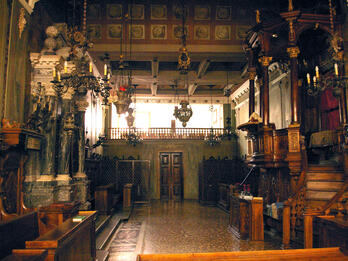
Great Italian Synagogue, Padua
Founded in 1548, the Italian Synagogue of Padua was moved to its current location by 1603. It was renovated in the nineteenth century and restored again after World War II, when the Scuola Grande…
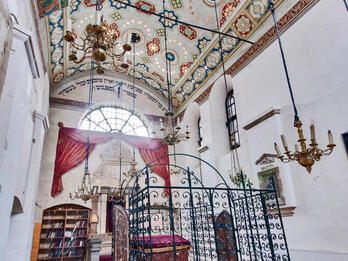
Rema Synagogue (Kraków)
The Rema Synagogue, named after the famous rabbi and scholar Moses Isserles (known by the Hebrew acronym “Rema”), was built in 1553 in the city of Kazimierz (today a district of Kraków). It was…
Engage with this Source
Related Guide
Jews on the Move: Early Modern Jewish Migration
1500–1750
The geography of Jewish settlement shifted dramatically in the sixteenth and seventeenth centuries.
Related Guide
Early Modern Trade and Mercantilism
1500–1750
International trade drove Jewish mobility during the age of mercantilism, as Jewish merchants formed wide commercial networks and partnerships and developed cosmopolitan attitudes that facilitated civic inclusion.
Related Guide
Early Modern Italy: Where East and West Meet
1500–1750
Ashkenazim, Sephardim, and Marranos encountered each other in Italian cities, developing community structures that later influenced Jewish communal organization throughout the western world.
You may also like

Scuola Grande Tedesca (Venice)
The Scuola Grande Tedesca is the oldest of five synagogues in the Venetian ghetto and was built in 1528 by the local Ashkenazic community. Although only its five windows are visible from the street…

Scuola Canton Synagogue, Venice
The second-oldest building in the Venetian ghetto is the Scuola Canton Synagogue. Built several years after the Scuola Grande Tedesca, the Canton Synagogue also served the Ashkenazic community. The…

Kadavumbagam Synagogue (Cochin, India)
The Kadavumbagam Synagogue received its name (which means “by the side of the landing place”) from its peripheral location at the border of the Cochin Jewish neighborhood, where it served the Malabari…

Scuola Levantina, Venice
The Scuola Levantina (Levantine Synagogue), a Sephardic synagogue built in 1541, was restored in the late seventeenth century. The bimah is thought to have been carved by Andrea Brustolon, famed for…

Great Italian Synagogue, Padua
Founded in 1548, the Italian Synagogue of Padua was moved to its current location by 1603. It was renovated in the nineteenth century and restored again after World War II, when the Scuola Grande…

Rema Synagogue (Kraków)
The Rema Synagogue, named after the famous rabbi and scholar Moses Isserles (known by the Hebrew acronym “Rema”), was built in 1553 in the city of Kazimierz (today a district of Kraków). It was…


